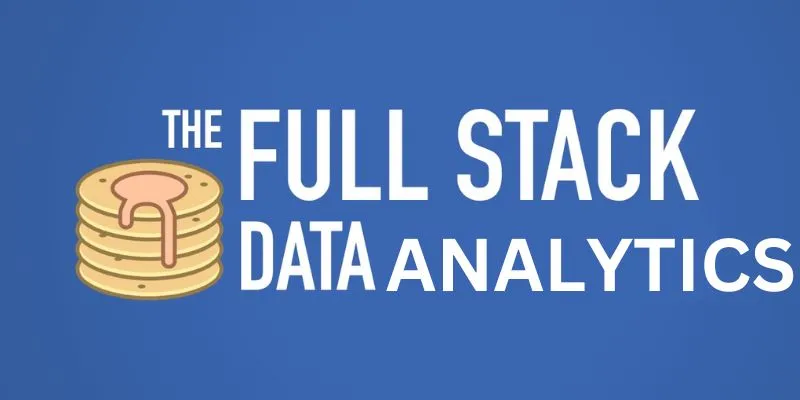In today’s fast-paced world, businesses depend heavily on data to make important decisions, improve processes, and provide better services. With the massive amount of data available, analyzing it correctly has become crucial. This is where Full-Stack Data Analytics comes into play. It combines different steps of data handling, from gathering to analyzing and presenting, into one smooth process. If you’re thinking about building a career in data analytics or full-stack development, this blog is for you.
What is Full-Stack Data Analytics?
Full-Stack Data Analytics is all about managing the entire data process from beginning to end. A Full-Stack Data Analyst can collect data, clean it up, analyze it, and then present it in a way that’s easy for people to understand. This is similar to how a full-stack developer can work on both the backend and frontend of a web application.
In Full-Stack Data Analytics, you cover a wide range of tasks, including:
- Data Collection: Gathering data from different sources like databases, APIs, or even websites.
- Data Processing: Cleaning and organizing the data so that it’s ready for analysis.
- Data Storage: Storing the data securely for future use.
- Data Analysis: Using tools and models to extract useful insights from the data.
- Data Visualization: Presenting data in the form of graphs, charts, and dashboards that make the insights easy to understand.
If you’re considering a Data Analytics Courses in Bangalore, learning about full-stack data analytics will help you understand how these different steps come together to form one comprehensive process.
The Key Components of Full-Stack Data Analytics
A Full-Stack Data Analyst needs to be able to handle each part of the data lifecycle. Let’s look at the main components:
- Data Collection
The first step is to collect data from various sources. This can include structured data like databases (SQL) or unstructured data from websites and APIs. Tools like web scraping and real-time data collection systems such as Apache Kafka are often used in this stage.
- Data Processing
Once the data is collected, it needs to be cleaned and organized. Raw data can have errors or missing values, so this step is crucial. Data processing involves removing duplicates, filling in missing information, and converting the data into a format suitable for analysis.
Python libraries like Pandas and NumPy are commonly used for this. If you’re aiming for a Full Stack Developer Courses in Bangalore, it’s helpful to learn these tools as they overlap between both development and data analytics roles.
- Data Storage
After the data is cleaned, it needs to be stored securely. Depending on the type of data, different storage systems can be used:
– SQL Databases like MySQL or PostgreSQL for structured data.
– NoSQL Databases like MongoDB for semi-structured or unstructured data.
– Cloud Storage solutions such as Amazon S3 for large-scale data storage.
- Data Analysis
Now comes the most important part—data analysis. In this phase, you apply various techniques, from statistical models to machine learning algorithms, to extract insights. Popular tools for this include Python’s Scikit-learn and TensorFlow for machine learning, as well as tools like Excel for simpler analysis.
This step is critical for delivering actionable insights that businesses can use to make informed decisions.
- Data Visualization
Finally, after analyzing the data, the results need to be presented in a way that’s easy to understand. Data visualization tools like Tableau or Power BI are used to create interactive dashboards and reports.
Why Full-Stack Data Analytics is Important
The growing demand for full-stack data analytics is a result of its ability to streamline the entire process, from data collection to presentation. Here’s why it’s becoming so essential:
- Efficiency: Full-stack data analytics allows one person or team to handle the entire data pipeline, reducing the time it takes to move from raw data to valuable insights.
- Seamless Integration: A full-stack data analyst has the skills to work on both the backend (data storage and processing) and the frontend (data visualization), ensuring everything works smoothly together.
- Informed Decision-Making: Businesses that leverage full-stack data analytics can make faster, more informed decisions because they have access to real-time insights.
- Versatility: With skills across the board, a full-stack data analyst can adapt to different challenges, making them a valuable asset to any organization.
Career Opportunities in Full-Stack Data Analytics
There’s a growing demand for professionals skilled in both full-stack development and data analytics. Whether you’re a developer looking to expand into data analytics or someone focused on data analysis and visualization, mastering both fields will significantly boost your career prospects.Similarly, students taking a Full Stack Developer Training in Marathahalli will benefit from learning data analytics, as it can enhance their ability to create data-driven applications.
Many educational programs now offer combined tracks that teach both full-stack development and data analytics.
Full-stack data analytics provides a comprehensive solution for managing data, from its collection to its final presentation. It combines various skills and technologies that enable professionals to handle the entire data lifecycle. As businesses continue to rely more on data-driven insights, the demand for full-stack data analysts will only grow.
If you’re considering entering this exciting field, pursuing a Training Institute in Bangalore can set you on the right path. With the right training, you’ll be well-equipped to tackle both data analytics and full-stack development, making you a highly valuable player in today’s data-driven world.
Also Check: Full Stack Developer Interview Questions and Answers
